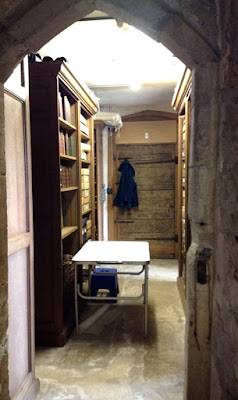Archaeology and Poetry: The Lansdown Poetry Workshop

Last week, the excavation received a visit from the Lansdown poetry workshop, an informal network of Bristol-based poets who meet once a month in The Lansdown, Clifton. The tour was organised by recent Bristol graduate, Robert Beavis, to provide an educational and inspiring experience, in the hope of stimulating creative responses to the academic environment. Although the processes of archaeology and poetry may seem worlds apart, they share many similarities. Archaeology makes the past present; poetry makes the past as experienced by somebody else present for the reader. Poetry can be can be used to reflect on the past, much in the same way that archaeology provides us with a physical interpretation of history. There is also a romanticism to archaeology, in the ruins of buildings or holding an artefact for the first time in hundreds of years, that can be seen in many poetic styles. Robert wished to highlight this and inspire the visiting poets to create their own artistic inter





